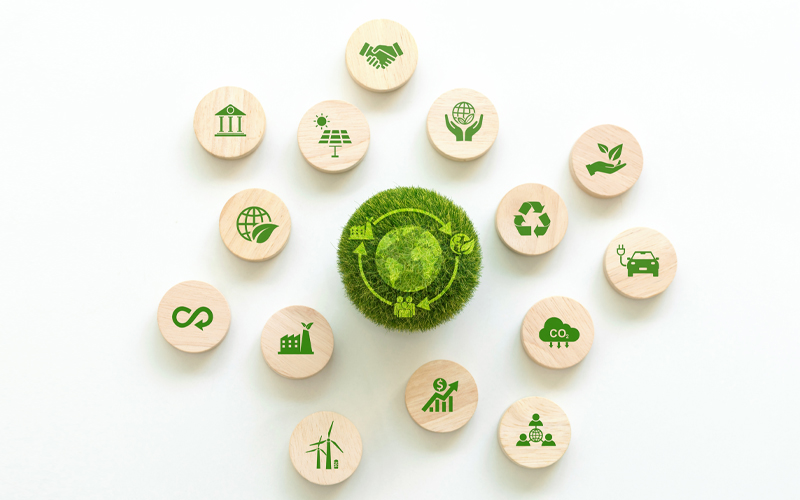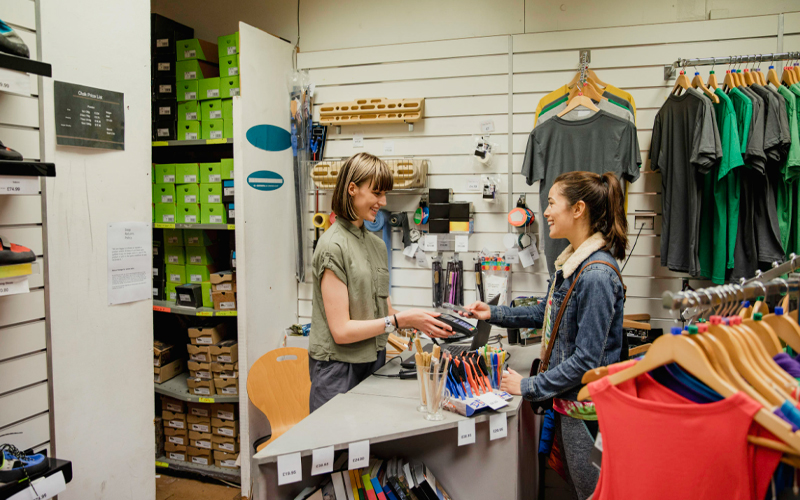In 2020, the European Union generated an estimated 177.9 kilograms of packaging waste per inhabitant. These figures are staggering and alarming, and they highlight the need for urgent action to reduce packaging waste. Business organisations are focusing on attempts to reduce the packaging waste they generate. Even among consumers, there has been a tectonic shift towards adopting more eco-friendly products.
A case in point is the fashion giant Zara which has committed to reducing the consumption of plastic throughout the lifecycle of its products. The boxes that they use for packaging are made from recycled plastics and the bags they give their customers are made from recycled paper. Several other businesses are taking similar steps to make their operations as environmentally friendly as possible.
So, is it easy to make the shift to sustainable packaging? Certainly not. In fact, there are several challenges that cpg outsourcing companies face in the journey to reducing packaging waste generation.
The roadblocks
Cost
Most consumers now, especially millennials, are extremely concerned about climate change and how their future will be affected due to the same. Nonetheless, how many of them would be ready to shell out more for products that are priced higher compared to competitor products?
Sustainable packing is often a costly proposition and in most cases, the increased cost for the same is passed on to the consumer by organisations. This increased cost could put several consumers off, making them reluctant to purchase.
Need for extensive research
The development of sustainable packaging materials often needs extensive research. Research involves costs, which become a damper for companies that don’t see the financial benefits of investing in R&D.
Effect on the longevity of the product
Needless to say, the main aim of packaging is to ensure that the quality of the product that it protects is not impacted in any way. Sustainable packaging is often recyclable and biodegradable, but it could compromise or lower the shelf-life of the product. Companies could end up losing money in the long run if the packaging for their products is not effective and durable enough to safeguard them during transit.
Conforming to regulations
Every country has its own set of regulations and rules that need to be adhered to for building greener packaging. Organisations will need to navigate these regulations and standards and work with experts in the area to ensure compliance. For example, countries like the United States of America have the Extended Producer Responsibility (EPR) legislation that has mandates in place that aim at reducing the negative footprint of a product and its packaging on the environment.
We have evaluated the challenges in sustainable packaging. There are obvious trade-offs to consider and we need to keep in mind the life-cycle of not only the product but also its packaging. So, if there are so many challenges, what are the opportunities in sustainable packaging and why do organisations keep at it?
Healing our planet:
The first obvious opportunity in sustainable packaging is the immense good that it does for our planet’s health! Even as greenhouse gas emissions and climate change threaten the very existence of mankind, organisations and people are making a run for changes that could stem the ongoing degradation of our surroundings. Not only that, effective and lighter packaging also enables the reduction in freight and transportation charges.
Improved brand reputation:
These days, with climate change being a matter of great concern, consumers are conscious about their responsibilities towards the environment. Hence, companies that adopt sustainable packaging stand to gain an advantage over competitors. Most companies do this by informing the customer about the efforts put in for sustainable packaging and their commitment to the planet. This promotes a feel-good factor towards the brand and encourages consumers to do their bit for the planet.
Opportunity for breakthrough research:
Research in the area of eco-friendly packaging must be done in the area of developing recyclable packaging, as well as developing adequate infrastructure to recycle packaging. The entire move to greener packaging has led to an opportunity for research teams to come up with winning solutions for pressing problems. In 2020, a consortium of around 15 leading retailers that included Target and Walmart tied up with innovation partners to launch a global search for sustainable ideas to reinvent the single-use plastic retail bag. Initiatives such as these, will, no doubt, pave the way for combating and addressing systemic challenges in the area of environmental degradation.
In the face of ever-increasing levels of pollution and environmental degradation, there is a crying need to support our planet. On an individual level, many of us are becoming more careful about how we treat our surroundings and our planet. While sustainability initiatives do come with their own set of challenges, it is heartening to see that organisations too are doing their bit to help with the reduction of carbon footprints, to enable a cleaner and greener future for all of us. By working together, individuals and organisations can make a real difference in protecting our planet for future generations.
For organizations on the digital transformation journey, agility is key in responding to a rapidly changing technology and business landscape. Now more than ever, it is crucial to deliver and exceed on organizational expectations with a robust digital mindset backed by innovation. Enabling businesses to sense, learn, respond, and evolve like a living organism, will be imperative for business excellence going forward. A comprehensive, yet modular suite of services is doing exactly that. Equipping organizations with intuitive decision-making automatically at scale, actionable insights based on real-time solutions, anytime/anywhere experience, and in-depth data visibility across functions leading to hyper-productivity, Live Enterprise is building connected organizations that are innovating collaboratively for the future.








